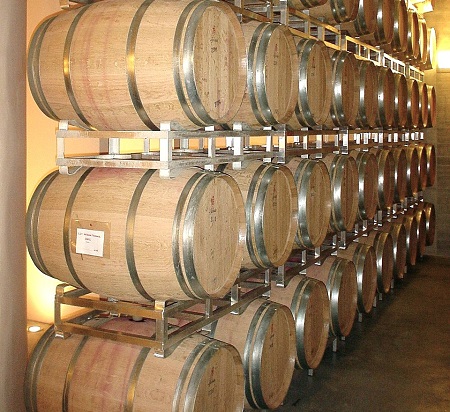Common Wine Cellar Climate Control Mistakes (And How to Get It Right)
 Building a wine cellar says a lot about someone because it is not just about storage, but more about taking care of what you value. Be it a few prized bottles or an expansive collection, there is one piece of the puzzle that often gets glossed over, and that is the system keeping everything stable. When properly set up and maintained, a wine cellar climate control system will ensure each bottle ages as intended. However, failure to do so can lead to unimaginable losses, especially if you are dealing with a large wine collection.
Building a wine cellar says a lot about someone because it is not just about storage, but more about taking care of what you value. Be it a few prized bottles or an expansive collection, there is one piece of the puzzle that often gets glossed over, and that is the system keeping everything stable. When properly set up and maintained, a wine cellar climate control system will ensure each bottle ages as intended. However, failure to do so can lead to unimaginable losses, especially if you are dealing with a large wine collection.
Poor Insulation and Sealing
Think of your wine cellar like a walk-in fridge. Sounds extreme? Maybe. But it is the only way to get it right. One of the biggest missteps folks make is skimping on insulation or forgetting about proper sealing. If vapour barriers are missing or the insulation is not the right type, air will slowly start seeping in.
As a result, the cellar will experience temperature fluctuations, unstable humidity levels, and eventually mould. Even a drafty door or a tiny gap can throw everything off. And when that happens, your wine pays the price.
Not Keeping the System Cool
Sure, you want your cellar sealed tight, but not airtight. And one thing to keep in mind is that good ventilation is not just for keeping your wine fresh, but also to prevent the cooling system from overheating. Let us say the condenser’s shoved in a corner with no ventilation. That trapped heat does not just sit there, it messes with the system’s performance.
Before long, the unit is struggling, your electricity bill’s climbing, and your collection is at risk. Even the cellar air needs some turnover, or you will end up with musty smells and labels that look like they have been through a swamp.
Choosing the Wrong Unit Size
Another common mistake people make when buying climate control systems is choosing a unit based purely on square footage. Sounds logical, but so many things can go wrong. What you really need to know is your cellar’s thermal load. That means looking at things like glass walls, ceiling height, how well it is insulated, and whether it backs onto an exterior wall.
Get it wrong, and you have either got a system too weak to keep things cool or too powerful for the space, cycling on and off like a yo-yo and wrecking the humidity balance. That said, it is a balancing act, and it starts with a proper heat load calculation, not a guesstimate.
Poor Placement
Where you place the system and its sensors can be just as important as what you install. Stick a sensor in a dead corner, hide the unit behind racking, or aim cold air directly at your prized bottles and things won’t go so well. Readings get skewed, air circulates unevenly, and suddenly parts of your cellar are overcooled while others are sweating it out.
The key? Bring climate control into the design process from day one. There are smart ways to hide the hardware without messing with performance, but it takes planning and not last-minute improvisation.
Skipping Maintenance
It is tempting to set everything up and assume it will run smoothly. But like anything mechanical, these systems need a bit of love to keep performing. Filters clog, sensors drift, and parts wear out.
Ignoring routine check-ups is like never servicing your car. And with wine storage, a small slip can have a big impact. Make maintenance a habit, because it keeps your climate stable, protects your wine, preserves natural flavors and helps your system last longer.
Takeaways
At the heart of every great cellar is precision. And this is not just a matter of installing a cooler and calling it a day, but understanding how temperature, humidity, and airflow interact in a very specific and controlled space.
To be safe, avoid the shortcuts, bring in people who know their stuff, and invest in quality wine cellar controller systems from reputable suppliers.